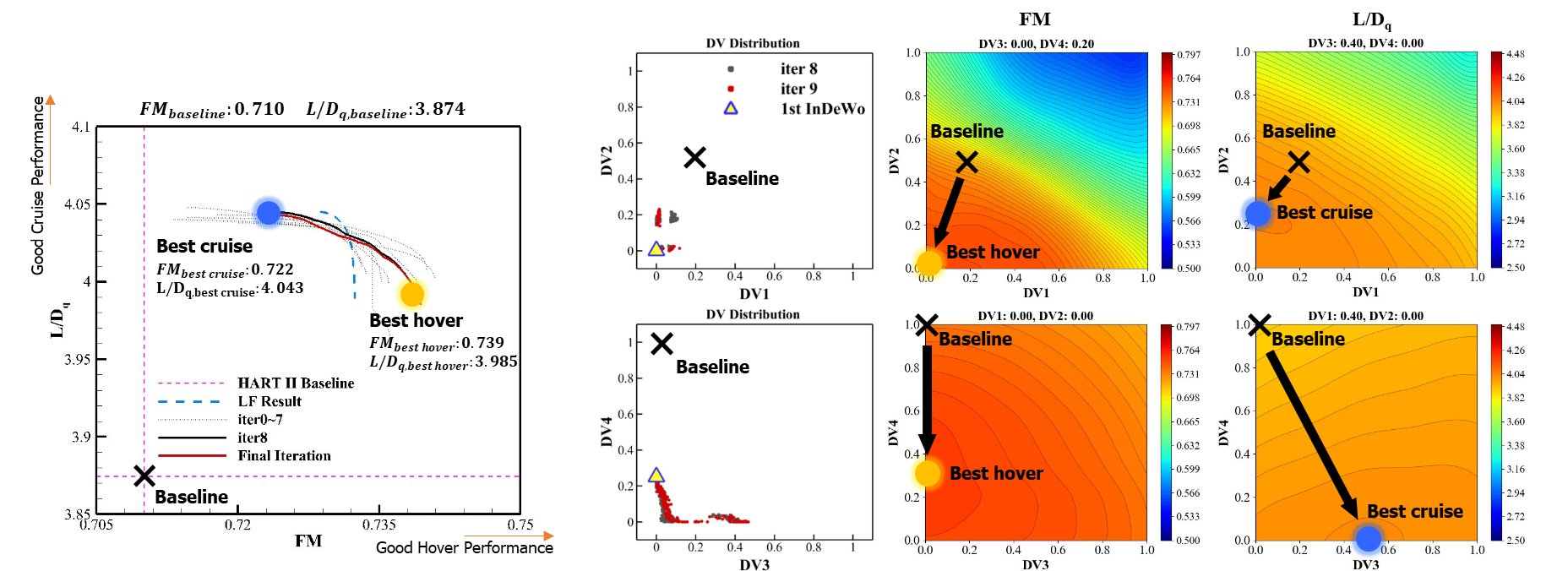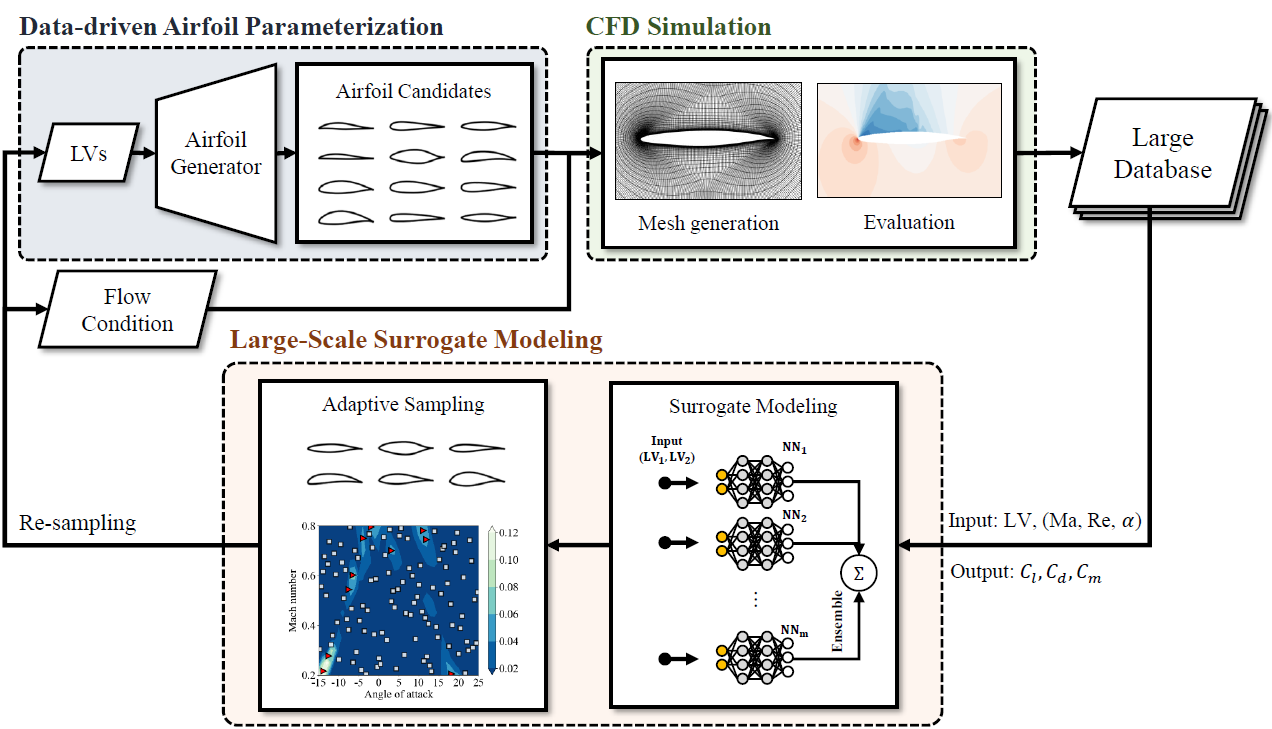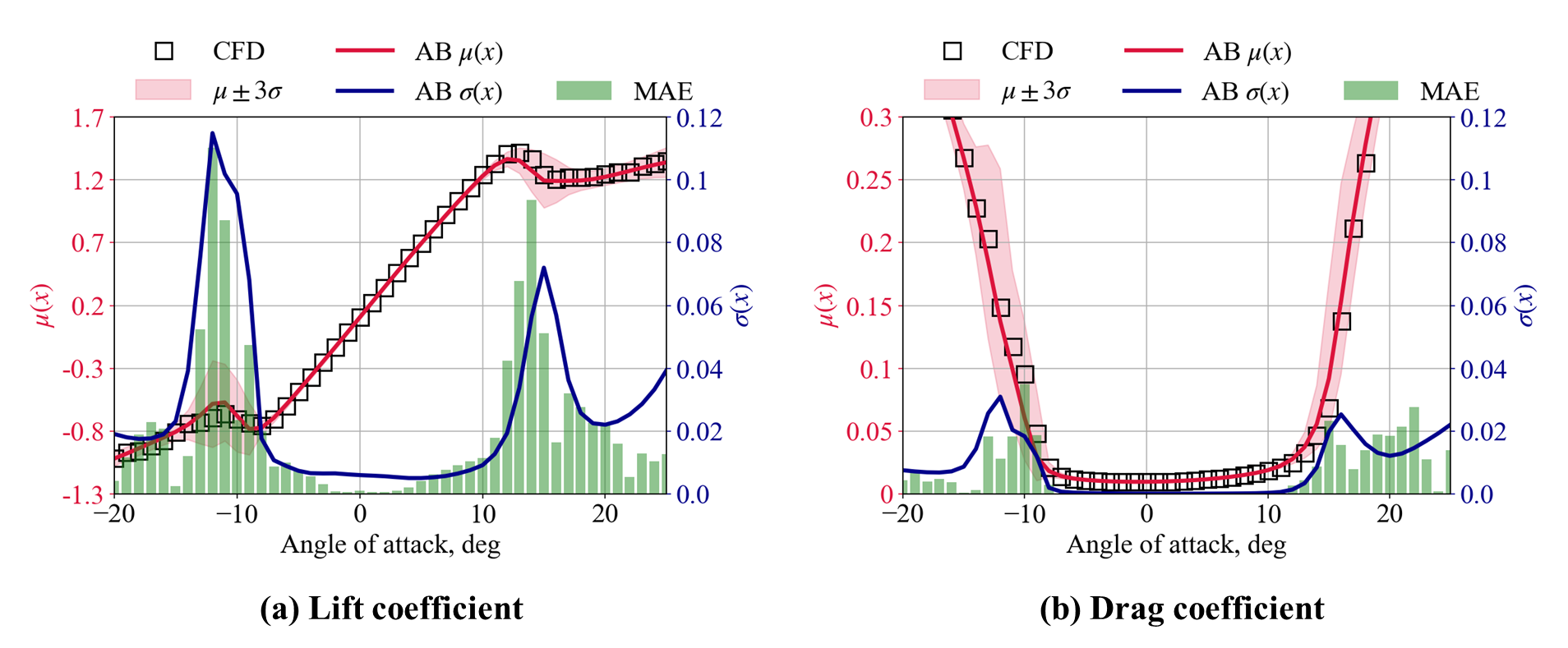Rotorcraft Blade Design
Variable Fidelity Design Method
High-fidelity CFD simulations provide accurate predictions in rotor blade design, but their high computational cost limits their use in large-scale optimization. Conversely, low-fidelity models offer faster computation but at the expense of accuracy. To address this trade-off, Variable Fidelity Modeling (VFM) integrates data from both low- and high-fidelity solvers to construct an efficient and accurate surrogate model for design optimization.

The key challenge in VFM lies in fusing heterogeneous fidelity data while maintaining model consistency. We employ a hierarchical Kriging approach that leverages the correlation between solvers of different fidelities—namely CAMRAD II for low-fidelity and KFLOW (3D URANS CFD) for high-fidelity analysis. Through adaptive sampling and Expected Improvement (EI)-based refinement, the model iteratively updates itself by selecting the most informative design points for high-fidelity evaluation.

This framework enables robust multi-objective optimization of rotor blades for both hover and forward flight, significantly improving Figure of Merit and propulsive efficiency. Final designs show less than 0.5% error compared to full CFD analysis, confirming the reliability of VFM predictions. By reducing simulation cost while preserving accuracy, VFM enables rapid exploration of complex design spaces and has proven essential for advanced rotorcraft development.
Airfoil Brain: Rapid Predition of Airfoil C81 tables Using Deep Neural Networks
In aerodynamic design of blades and propellers, airfoil performance look-up tables such as C81 are commonly used to accelerate the evaluation process. However, generating these tables for a wide range of airfoil geometries is computationally prohibitive due to the high cost of CFD simulations. As a result, airfoil shape variations are often excluded from the optimization process, limiting design flexibility. To overcome this constraint, a data-driven approach is needed to rapidly generate C81 tables across diverse airfoil geometries.
However, there are two major challenges to be addressed: (1) the efficient representation of a wide range of airfoil geometries, and (2) scalable and reliable prediction across broad flow regimes. To tackle the first challenge, we propose a data-driven airfoil parameterization method that can represents diverse geometries using low-dimensional, smooth, and intuitive latent variables. For the second, we employ a deep ensemble neural network that quantifies both model and data uncertainties, enabling robust performance predictions. Furthermore, an adaptive sampling strategy is introduced to improve training efficiency by adding more data samples on highly nonlinear region in iterative manner.

These innovations are integrated into Airfoil Brain, a unified framework trained on over 90,000 CFD cases to predict full C81 tables with uncertainty estimates. The framework enables scalable and reliable aerodynamic optimization considering both airfoil shape and planform variables. Applied to real-world design cases, Airfoil Brain has demonstrated significant performance improvements in both fixed-wing and proprotor configurations.

Reference
[1] Kang, Y. E., Lee, D., & Yee, K. (2025). Intuitive and feasible geometric representation of airfoil using variational autoencoder. Journal of Computational Design and Engineering, 12(2), 27-48.
[2] Kang, Y. E., Lee, D., Hong, Y., Yang, S., & Yee, K. (2024). Leveraging Deep Neural Networks for Efficient Prediction of Aerodynamic Performance Tables. In AIAA AVIATION FORUM AND ASCEND 2024 (p. 3754).